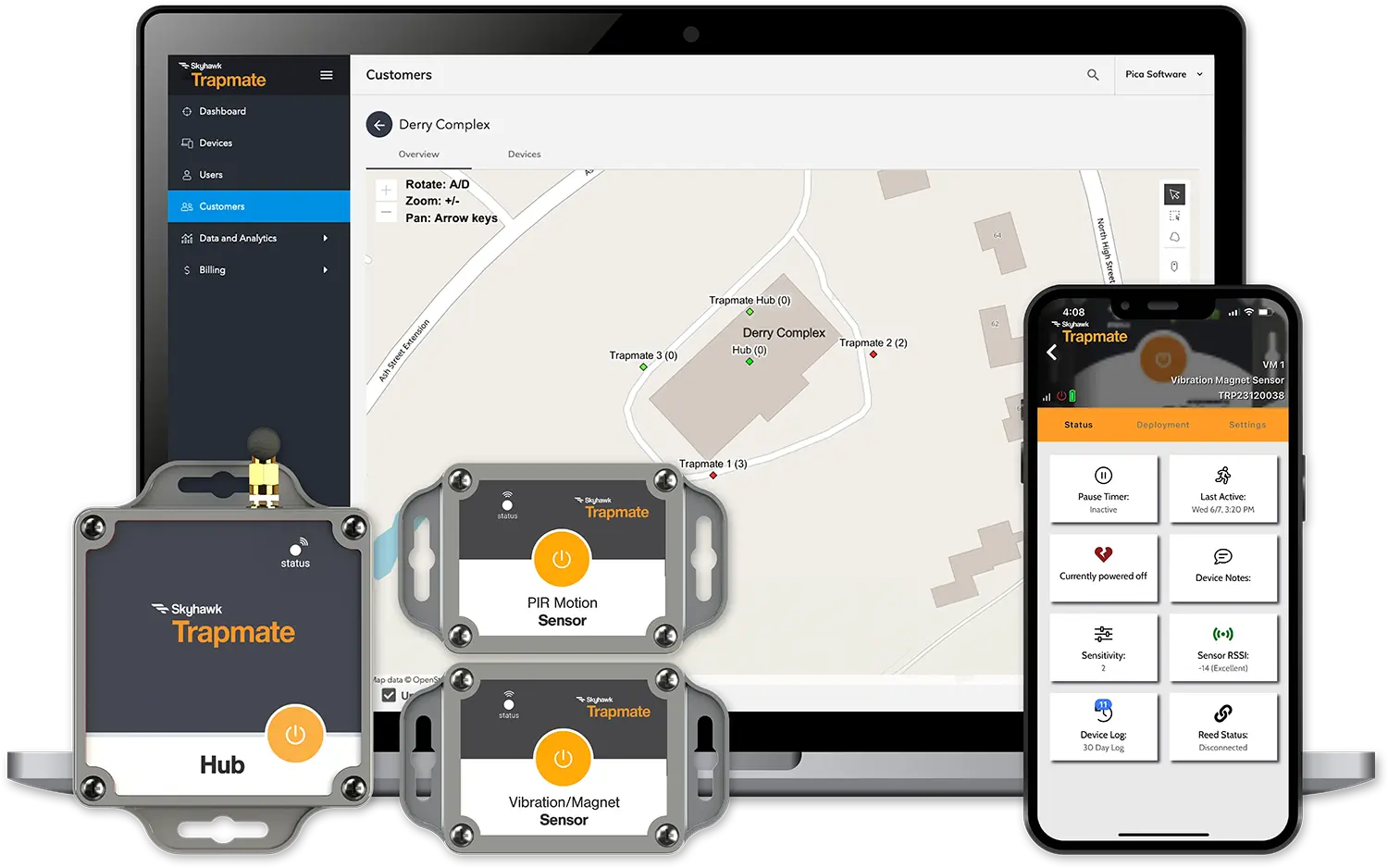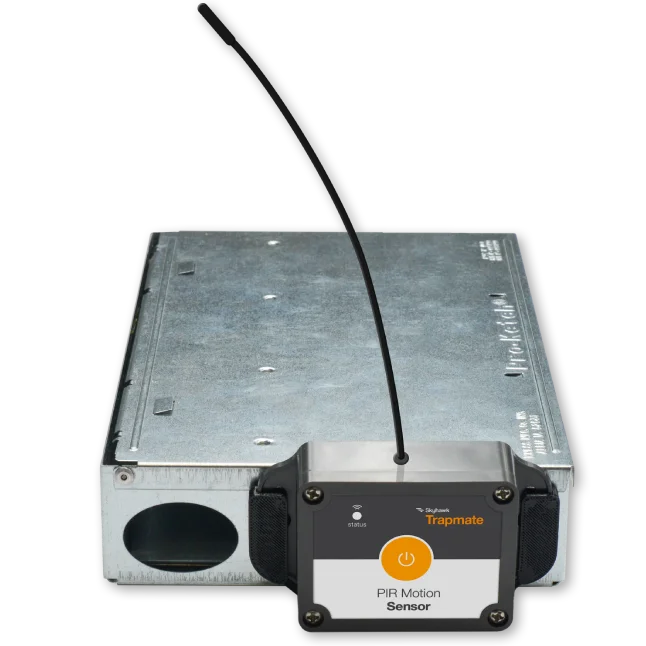Multi-Trap Solutions

For pest and wildlife control teams that want to monitor multiple traps in a location, Skyhawk Trapmate offers the Trapmate Hub and two types of Trapmate Sensors.
Both the Trapmate Hub and Sensors are self-powered with replaceable batteries, meaning you can install them virtually anywhere for extended periods of time to achieve the best monitoring performance and the largest coverage area.
Only monitoring one or two traps at any location? Check out our single-trap solutions.»

Trapmate Hub
The Trapmate Hub is the network gateway for multi-trap installations. The Hub routes Trapmate sensor alerts and other status messages to the Trapmate mobile app and enterprise portal via a cellular cloud connection.
The Trapmate Hub can communicate with sensors as far away as 2500 feet away outdoors or hundreds of feet indoors.
You don’t need to worry about power, WiFi, or other network connections – the Trapmate Hub is a drop and go, self-powered, cellular connected solution.
Because it’s battery-powered, you can place the Trapmate Hub high up on walls, buildings, or even trees, safely out of the way of foot or machine traffic. Your Hub will get one to two years of operation on three AA batteries.
Lightweight, compact and built to last, the Trapmate Hub outperforms other ERM gateways in range, flexibility and value.
Trapmate Dual Vibration/Magnet Sensor
The Trapmate Dual Vibration/Magnet Sensor (DVMS) is a two-in-one device which utilizes two different sensor mechanisms to detect when an animal is caught in a trap.
The magnet sensor (also known as a reed switch) attaches to traps and detects when a door shuts or a trap is sprung. The accelerometer separately detects vibrations within a trap or station.
Depending on the types of traps and stations you’re using, you can use either of the two sensors or both in tandem for extremely reliable and accurate indications of trap activity.
When the sensor is triggered, it sends an alert to your Trapmate Software by way of connection to the Trapmate Hub, which can be hundreds or even several thousand feet away.
Trapmate Passive Infrared Motion Sensor
The Trapmate Passive Infrared (PIR) Motion Sensor uses an infrared detector to identify when live animals are in your traps.
Designed to be installable both inside of a station or attached to the outside of a station looking in, the PIR Motion Sensor provides an alternative to the Dual Vibration/Magnet Sensor which is ideal for multi-catch traps and for any environment where natural or machine vibrations are present.
You can also use the Trapmate PIR Motion Sensor in closed spaces, such as in attics and above drop ceilings, to locate the source of rodent and other animal infestations, helping to determine the best locations for trap placement and areas that require exclusion efforts.








